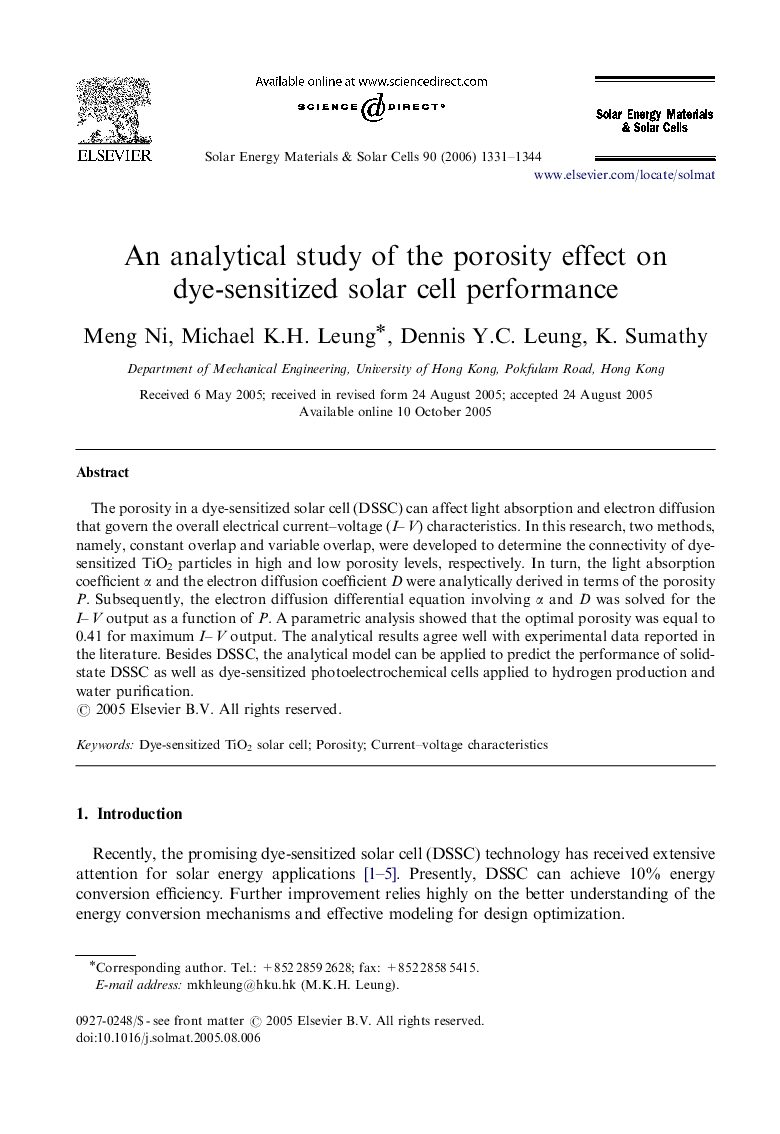| Article ID | Journal | Published Year | Pages | File Type |
|---|---|---|---|---|
| 81084 | Solar Energy Materials and Solar Cells | 2006 | 14 Pages |
The porosity in a dye-sensitized solar cell (DSSC) can affect light absorption and electron diffusion that govern the overall electrical current–voltage (I–V) characteristics. In this research, two methods, namely, constant overlap and variable overlap, were developed to determine the connectivity of dye-sensitized TiO2 particles in high and low porosity levels, respectively. In turn, the light absorption coefficient α and the electron diffusion coefficient D were analytically derived in terms of the porosity P. Subsequently, the electron diffusion differential equation involving α and D was solved for the I–V output as a function of P. A parametric analysis showed that the optimal porosity was equal to 0.41 for maximum I–V output. The analytical results agree well with experimental data reported in the literature. Besides DSSC, the analytical model can be applied to predict the performance of solid-state DSSC as well as dye-sensitized photoelectrochemical cells applied to hydrogen production and water purification.
